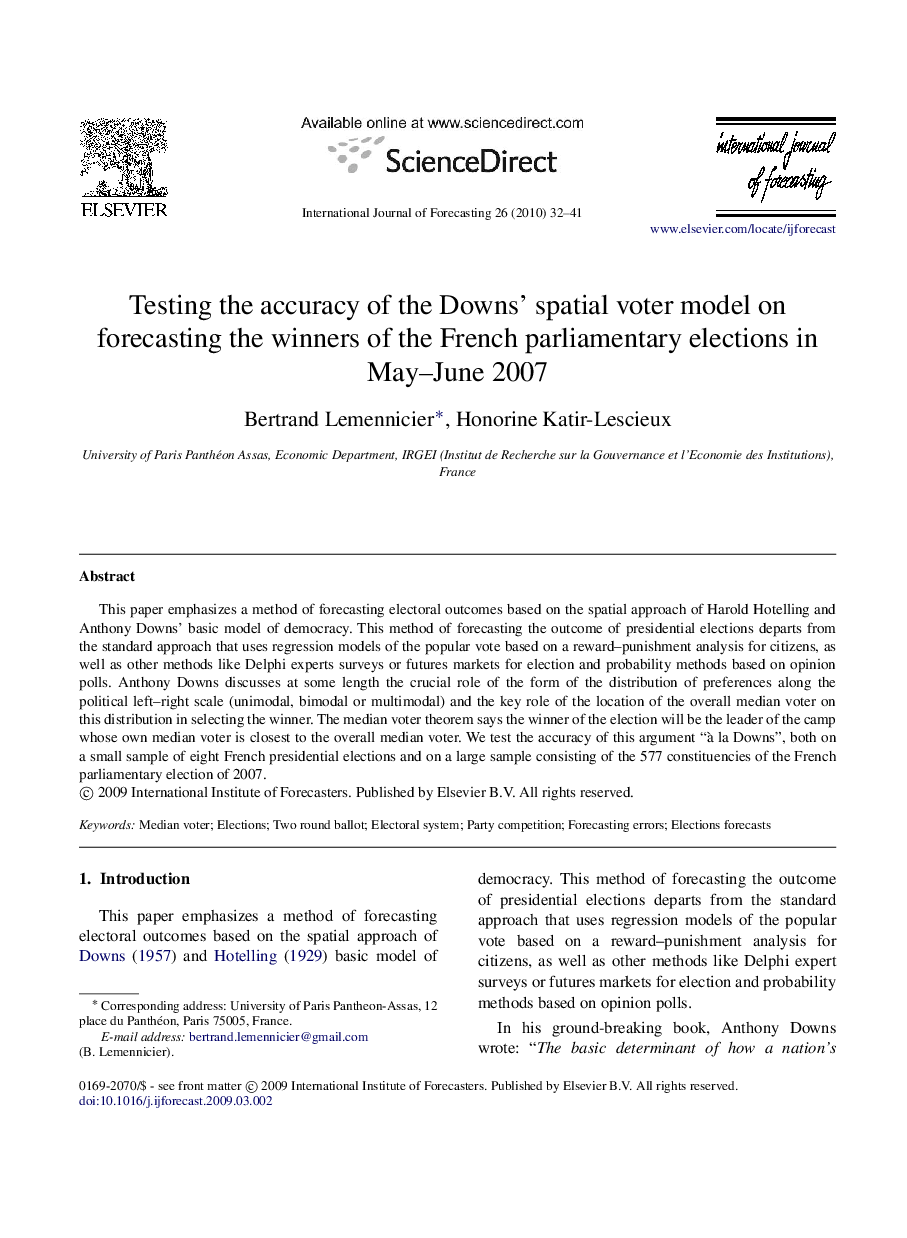| Article ID | Journal | Published Year | Pages | File Type |
|---|---|---|---|---|
| 998125 | International Journal of Forecasting | 2010 | 10 Pages |
This paper emphasizes a method of forecasting electoral outcomes based on the spatial approach of Harold Hotelling and Anthony Downs’ basic model of democracy. This method of forecasting the outcome of presidential elections departs from the standard approach that uses regression models of the popular vote based on a reward–punishment analysis for citizens, as well as other methods like Delphi experts surveys or futures markets for election and probability methods based on opinion polls. Anthony Downs discusses at some length the crucial role of the form of the distribution of preferences along the political left–right scale (unimodal, bimodal or multimodal) and the key role of the location of the overall median voter on this distribution in selecting the winner. The median voter theorem says the winner of the election will be the leader of the camp whose own median voter is closest to the overall median voter. We test the accuracy of this argument “à la Downs”, both on a small sample of eight French presidential elections and on a large sample consisting of the 577 constituencies of the French parliamentary election of 2007.
